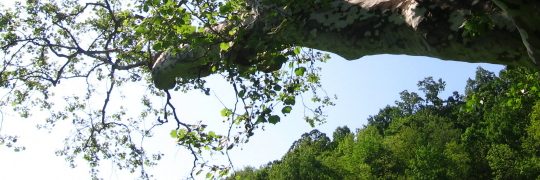Tuesday morning, sunrise on the prairie – even if we can’t see it. It is raining but not freezing. We pull out, me in the lead, keeping an eye on the truck in the rear view so I don’t get too far ahead. Four days on the road and we have hours yet to the Texas line. We’re still not sure about the truck, which had not been able to do over 50 on the level before the repair. Visibility is low, and drops to about 20 feet every time a big rig passes me, which is often. It is hovering around freezing, and I worry there will be unexpected patches of ice. I set the cruise control at 60 and we slog on. We make Forrest City, Arkansas by dark. This is short of halfway, so we’re looking at another night on the road.
Wednesday morning, five days on the road, we finally make it east of the Mississippi, passing the glass pyramid at Memphis, which Arend declares he likes. I say driving this road is always like going back in time, and he asks why. Before Texas, we lived in Tennessee. In the first years in Texas, we drove back to West Virginia each Christmas. The year he was born was the last. Too far, too much time on the road for small children, it needed at least ten days off to make it worthwhile, time that was hard to get. Waco, Dallas, Texarkana, Little Rock, Memphis, Nashville, Elizabethtown, Lexington, Ashland, Huntington, Charleston, home. By the time we drove him to college in Chicago, with a detour to Cincinnati on the way, we never wanted to drive that stretch again. We had made three round-trips since then, experimenting with cutting across southern Indiana and Illinois, sliding across northern Arkansas on local highways. But there’s not much way to avoid Texarkana to Dallas and I-35, not if you live in the heart of Texas.
We hit the snow somewhere in Middle Tennessee, and the maze of lanes, split and merges through Nashville is as daunting as always. The truck is due back Thursday morning and we haven’t heard from Budget Customer Service; we think we should get two days, since we lost two days of driving time. It is snowing hard, and we’re in serious hills now. We stop at a combination A&W/KFC in Bardstown, Kentucky. Robert calls Budget, and they say we can have until 2:30 a.m. Saturday, an extension of the exact number of hours from breakdown to repair. We move on. We stop for gas and diesel in Versailles, as soon as we get off the parkway, and decide we can make Mt. Sterling before dark. Later, watching the news in the motel, we see pictures of multiple wrecks on the New Circle Drive overpass in Lexington an hour after we went over it. There had been “thundersnow” – a snow squall with thunder and lightening, when an inch of snow fell in 10 minutes.
Thursday morning, the end is in sight, but we’re heading into snow. I am always pleased to cross the bridge at Ashland and see that West Virginia welcome sign, never more than today. I point out a bookmobile stop far below us as we go through Huntington, from my days working for Cabell-Huntington Library. As soon as we have threaded our way through Charleston and made it to I-79, I call my brother, who will leave work and meet us to help unload.
The snow gets heavy about Big Chimney. Arend asks to stop at a gas station and I pull of at the next exit, which happens to be Clendenin. As soon as I am off, I realize the road is snow-covered, curving, and way too narrow, there is not much between there and Clendenin, and no place to turn the truck around. I have Arend call Robert to tell him to pull over and wait for us. We pull into a gas station and I call Robert back to tell him where we are and why. He says he has pulled in to a gas station, and asks where we are. I look across the lot and see him parked. I can see why he missed the Jetta wagon; how I missed seeing a 24-foot truck, I don’t know. We get drinks and move on.
I always forget until I’m on it how steeply I-79 goes up and down over the ridges. Robert says later he was relieved to see how slowly other trucks were going on the hills. I woory about the exit to US 50 on Bridgeport Hill, the long steep slope down Bridgeport Hill into town, the narrow tight cloverleaf from there, and most of all, whether the truck will actually fit on our parking pad.
We do all that, the truck fits, and my brother arrives soon after we do. It will take until Friday afternoon to get everything unloaded, but we’re home.


